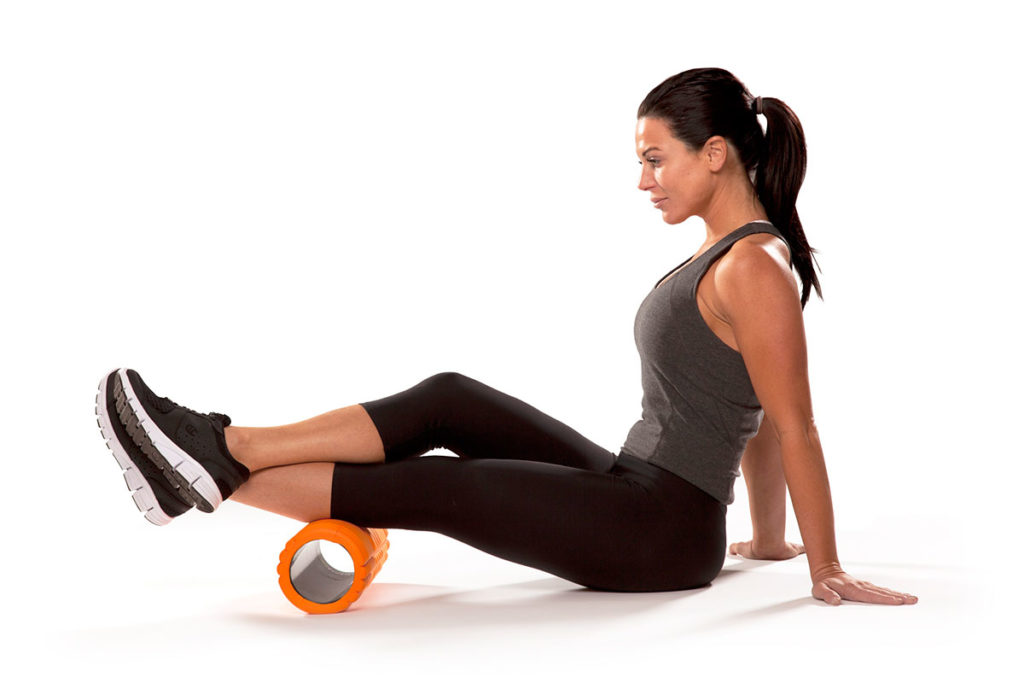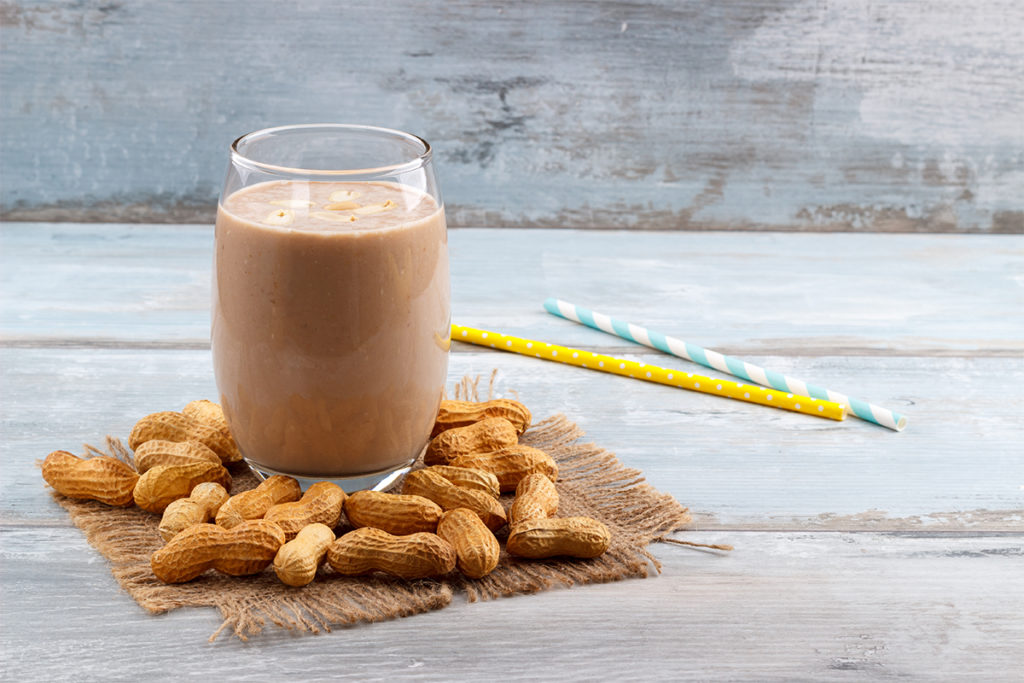Foam Rolling With TriggerPoint™ Performance

Foam rolling, also known as self-myofascial release, has become one of the more popular trends in fitness in the past 5 years. However, few people really know what foam rolling is or why to do it. A common response to the why question is “because it feels good.” There is nothing wrong with this answer, but health and fitness professionals should know a little more about foam rolling and its benefits.
Self-myofascial release vs. foam rolling: Self-myofascial release (SMR) and foam rolling are often used interchangeably. Self-myofascial release stems from the common manual therapy practice of myofascial release. Myofascial release is described as applying a low load, long duration force in a particular direction and holding until histological changes are made. This has been speculated to occur between approximately 90-120 seconds. Self-myofascial release implies that an individual is attempting to replicate these same changes on themselves. While this could potentially be done, the way most people foam roll does not qualify as self-myofascial release. One of the most important things to do when using a foam roller is to roll slowly, about an inch per second.
This has created some controversy between the terms. Many therapists say that foam rolling is ineffective because it is only rolling over the top of the skin. It is hard not to agree with them seeing how most people roll. Therefore, it is important to put some programming behind the madness. Rolling over the skin will work to increase circulation, but rolling must also include static holds on areas of increased tenderness, along with motions that create a dragging or cross-friction motion in the tissue. That is the essence of TriggerPoint™ foam rolling, and for the purposes of this article, self-myofascial release and foam rolling will be considered the same thing.
What is SMR? SMR is often called the “poor man’s massage.” Myofascial release is a hands-on technique that therapists have been using for years, and through different mechanisms, it “releases” the tissue and restores the mobility between those sliding surfaces. While many debate what is actually released, if done properly, the release is the breaking of hydrogen bonds. To make these changes yourself, a foam roller can be used in place of a therapist’s hands. While the foam roller will never completely replace a therapist, it serves as a great daily alternative to help maintain the changes your therapist made.
What are the benefits of SMR? SMR can have a wide range of benefits for the everyday gym goer. Some of the basic, most obvious benefits are increased blood flow throughout the body, better movement, and increased range of motion. These benefits can decrease the chance of injury and recovery time after a workout. A decreased recovery time means more training sessions per week/month and quicker results.
What is the difference between the TriggerPoint GRID® foam roller and a regular foam roller? The TriggerPoint GRID is designed to help increase blood flow. The patented three surface design, known as Distrodensity™ zones, is meant to replicate the touch of a massage therapist’s hands. One area is low and flat like the palm, another area is more tubular like the fingers, while another is high and firm like the finger tips. There is a consistent density, but given the different sizes, there is a measurable difference in the amount of pressure exerted on the body when rolling. The surface of the GRID can be thought of as a “multilevel rigid” foam roller. Multilevel rigid rollers have been found to apply more pressure to the tissue than a regular roller. The more pressure applied, the more layers of tissue can be changed.
The GRID is reinforced by a hard, hollow polyvinyl chloride inner core with a layer of neoprene on the outer diameter. This design not only makes it superior to a regular foam roller, but it also leads to a consistent amount of pressure applied over the lifespan of the roller. The majority of foam rollers on the market will eventually break down or conform into the shape that more or less resembles an egg. Whereas, if used appropriately, the GRID will likely be the last roller you’ll ever need to purchase.
When should SMR be done? In a perfect world SMR would be done both before a workout as part of a dynamic warm-up and as part of a cool-down. As part of the warm-up, it should be the first thing done, before any stretching or cardio. Foam rolling has been shown to increase range of motion without decreasing the performance of a muscle. Foam rolling helps to reduce tension in the muscle and “break up” small adhesions or knots that may form between multiple layers of tissue. When people don’t use their body the way it was intended, small layers of fibers begin to lay down between the sliding surfaces. A few minutes of compressing and rolling can help reduce this and improve movement patterns before exercise.
As part of a cool-down, foam rolling helps to flush out blood that has pooled in the working muscles and allows for fresh nutrients and oxygen to come in and begin the healing process. This may not completely eliminate soreness, but it will speed up the recovery process, leading to more opportunities to work out harder in the near future.
As most of us our limited by time, you can choose just one time to roll with pre-workout foam rolling providing the best results. Rolling for as little as 5 minutes before a workout can deliver the benefits listed above and have a great impact on the quality of each training session.
Is there SMR education? While there are different types of foam rollers on the market, there is very little education on how to actually roll. One of the first education companies to provide any methods or principles was the National Academy of Sports Medicine. In “Integrated Training for the New Millennium,” Dr. Michael Clark introduced foam rolling to the fitness industry. The principles behind SMR in NASM’s text are similar to TriggerPoint therapy.
The basic concept is to find a muscle or muscle group that is overactive and roll it slowly, identifying tender spots and holding for approximately 30 seconds or until the tenderness reduces. This is the preferred method for new clients just beginning a program. Once a client has worked on reducing the tender spots, there must be a progression to introduce movement between the sliding surfaces. TriggerPoint Performance has developed a variety of techniques that use both the static method and active methods. By applying pressure to the tissue and moving a nearby joint, more motion can be added to achieve better overall results.
SMR education: TriggerPoint has developed a systematic total body approach to SMR and consider the following five key muscle groups to be some of the more problematic areas of the body.
- Calves: Sit with your legs extended and the GRID beneath the soleus. Place hands slightly behind the hips and cross your legs at the calves for added pressure. Roll forward and back four times, followed by four spans.
- IT band: From a side plank, plant your top foot in front of your extended leg. Place the GRID beneath the extended leg just above the knee and shift your weight onto the GRID, turning your toes inward. Roll forward and back four times, followed by four knee bends.
- Quadriceps: From a plank position, place the GRID just above the knees. Plant your elbows beneath the shoulders and flatten your palms. Roll forward and back four times, followed by four knee bends.
- Glutes: Place the GRID beneath the center of your glute on one side, shifting your weight onto the GRID. Roll forward and back four times, followed by four cross-frictions.
- Thoracic spine: Lie on your back with the GRID just above your lumbar curve. Place your feet flat on the floor and cradle your head in your hands. Roll forward and back four times, followed by four cross-frictions.
TriggerPoint offers both live and online professional foam rolling education courses worldwide and recently launched a new online education platform. This platform includes access to a free GRID foam rolling video series that outlines the benefits of foam rolling and provides step-by-step instructions to effectively address these five key areas. To access the GRID Foam Rolling Video Series, visit www.tptherapy.com/watch, and to learn more about TriggerPoint’s education offerings or to find a course in your area, visit www.tptherapy.com/learn/course-schedule.





